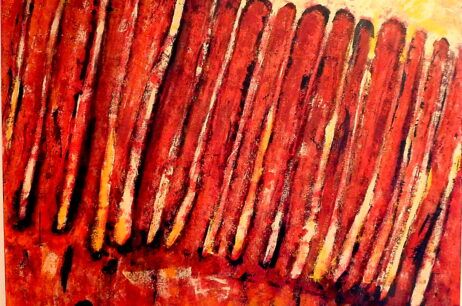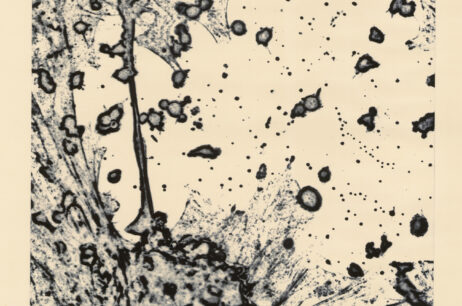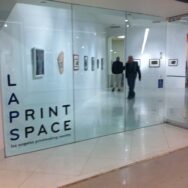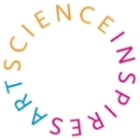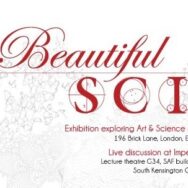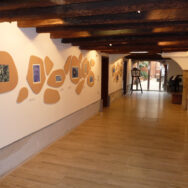Interview with SciArt Initiative
http://www.sciartinitiative.org/melissa-belli.html?
Melissa Belli Featured Artist in Colloquium Magazine, interview by Kiran Gurung, Colloquium Manager.
Read MorePrint Facets: Five Centuries of Printmaking
Group show at The Curator Gallery, New York, New York
Excerpts from curator gallery exhibit description:
“The Curator Gallery presented Print Facets: Five Centuries of Printmaking, curated by Rebecca Michelman.
The printmaking of over forty contemporary artists stands alongside historical prints from the 16th to the 20th centuries, including works by Goya, Durer, Rembrandt, and Warhol.
From the 17th century mezzotint printers whose secret techniques revealed light from darkness, to the inventions of sugar lift and spit bite methods, Print Facets explored the rich and complex medium of print art. The exhibition opened on September 12th and ran through October 25th, 2014.
A selection of masters from the 17th-20th centuries were shown, including: Rembrandt van Rijn, Albercht Durer, Francisco Goya, Wallerant Valliant, Giovanni Piranesi, Honore Daumier, Max Pechstein, Karl Schmidt-Rottluff, Andre Derain, Jacques Villon, Tod Lindenmuth, Raoul Dufy, Jan Matulka, Fritz Eichenburg, George Bellows, Edward Hopper, Martin Lewis, Harriet Lanfair, Pablo Picasso, Louis Lozowick, Letterio Calapai, Joseph Hirsch, Armin Landeck, Barnett Newman, Jasper Johns, Andy Warhol, Helen Frankenthaler, and Kiki Smith.
The Curator Gallery is a fine art gallery located on 23rd Street in Chelsea which collaborates with notable guest curators for each exhibition. Founded and underwritten by Ann S. Moore, the retired Chairman and CEO of Time Inc., the gallery’s mission is to bring exposure to hardworking artists, as well as to educate and expand the pool of engaged, serious collectors. “
Read MoreLos Angeles Printmaking Society New Member Show 2012
Melissa Belli participated in“Pressing Ahead” the LAPS new members show. The event took place at The Pacific Design Center in LA Print Space gallery and featured the works of new LAPS members from 2009-2012.
November 15th – December 13th 2012
Gallery hours open 12-5pm Tues – Friday
Reception: Thursday November 15th 2012 5:00pm-8:30pm
Location: LA Print Space @ Pacific Design Center
Space B273 in the Blue Building
8687 Melrose Avenue West Hollywood, CA 90069
Vital Signs 2012 New York Hall of Science Exhibition
Melissa Belli was one of the twenty artist selected for Vital Signs 2012, the 14th annual, Art-Science Exhibition at the New York Hall of Science, September 4, 2012 to February 3, 2013. The exhibition was organized by Art & Science Collaborations, Inc.
Vital Signs 2012, Website Introduction
“For many artists of the 21st century, the Internet’s rich supply of public domain images of living organisms (animals, including humans and insects; plants, and even bacteria) has dramatically affected the degree to which biology inspires art. Powerful scientific imaging tools have opened a new aesthetic “window” on what previously could only be seen after a subject’s death and dissection. Additionally, our global “information super-highway” has revolutionized public access to scientific research data and to its researchers. The bold field of live bio-art is gaining practitioners as university labs open their doors to artistic investigations and experiments. More recently, scientific funding agencies are requiring that scientists share their current research in more publicly accessible and engaging ways, and this is creating a new avenue for artists to collaborate on visual projects and art-science exhibitions”.
Beautiful Science
In order to address the growing demand for scientists to share their research in more publicly accessible and engaging ways Beautiful Science project brought together postdoctoral researchers from Imperial College of London and a group of independent artists to transform the visual scientific data obtained with the latest imaging technology into compelling art pieces that would allow observers to connect with the beauty and the science of the research process.
Melissa Belli, one of the artist involved, is a physician and artist that had an affinity for neurons, she started working with them in the print studios of the International Graphics School in Venice, where she studied art for two years. Her work earned her a prize that led to a solo exhibition entitled “Animalcules: an exploration of the microcosm within” with a series of etching and engravings based on semi-abstraction of cellular imaging, that was shown in an installation with MDF frames that were modeled in 3D architectural software to mimic clusters of cells. During the development of this show Melissa was residing in London and seeking source material from Imperial College of London Facility for Imaging by Light Microscopy. Martin Spitaler, facility manager, collaborated with Belli in this project and later invited her to participate in Beautiful Science.
At the onset of the project researchers and artists met to share their work and express their interests in collaboration. Melissa’s affinity for neurons resonated with Eric Dubuis’s work with lung neurons, especially vagus nerve sensory neurons implicated in airway inflammatory response and the cough reflex. These cells are being studied as a new promising target for the development of drugs to treat cough and inflammatory lung diseases like asthma and emphysema.
Eric provided Melissa with a library of microphotographs from his work. She combed through the images and chose two, she then started a process of digital modification, layering, filtering and reformatting that took months. In the mean time she researched ways of fabricating the pieces. She wanted to work in metal but wanted also to make something different and large. Initially she had wanted to transfer the images onto polished mirror grade stainless steel, but after much research costs and technical difficulties, that avenue was closed.
With a background in etching and printmaking, Melissa Belli was brought back to the traditional etching metal copper.
Furthermore, by using the etching medium, which has been compared to alchemy for its use of acids, formulas, and metals, she sought to draw a parallel between the methodology and precision of scientific research protocols and the meticulousness of creating an oversized etching.
She started her artwork at Josephine Press in Los Angeles, California under the guidance of master printmaker John Greco. The largest possible photoetching plates were ordered at 61 by 91 centimeters, specialists were consulted, materials were ordered in unusual quantities, facilities to process large etchings and produce large films were contacted, plates were developed, submerged in acid in large etching tanks, images printed, plates stripped, polished, inked, sealed, framed, crated and transported. With every step taking endless preparation, tests, adjustments and very often errors, which in some cases greatly contributed to the final product.
In the end four pieces were presented by Melissa Belli at the Beautiful Science exhibition together with the works of ten other artist and ten other scientists. The exhibit took place at the Brick lane gallery in the summer of 2012 and was success.
In Pneumotaxix burst, a diptych of a copper plate and its print, we see on the lower left side of the image, a convex reticulated structure depicting a sensory neuron’s body from the nodose ganglion of the vagus nerve trunk; axons extend in an explosive pattern. The globular structures are transverse sections of dendrites and the smaller points are an abstraction of neurochemicals released during stimulation. The image is striking due to its medium, size and momentum, the explosiveness of the image and the complexity of its texture and spaces. The image communicates the power, vitality and speed of neuronal communication in the autonomic nervous system and the effects of stimuli on vagal respiratory afferent pathways mediating the cough reflex.
In Somata Fragments we see a neuron’s body in a process of fragmentation which reflects the myriad stimuli, inputs and outputs that neurons have the capacity of transmitting and analyzing to create our complex bodily reality.
Read MoreAnimalcules
Melissa Belli produced a body of artwork based on the observation of human cells that was exhibited in her solo show “Animalcules: an exploratioin of the microcosm within” at the Sotoportego Gallery of the International Graphics School in Venice, Italy. The project strove to make current cellular scientific research accessible to the public by artistically representing discoveries and phenomena in the structure and behavior of cells. Raw images extracted in collaboration with Martin Spitaler from Imperial College London using various sources, including microscopes at ICL’s Facility for Imaging by Light Microscopy, these images were then artistically interpreted and translated to bring the viewer’s awareness closer to the microcosm within. The work was exhibited in an installation designed in 3D CAD software and cut with CNC machines in collaboration with Melissa Woolford from Nous Gallery/A4M and John Szlachta from Zaha Hadid Architects. For further information go to https://sites.google.com/site/animalcules2010/home/installation.
Read More









